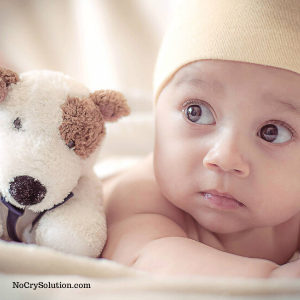
When you’re a dog owner and it’s time to welcome a brand new (human) member to your family, what is the best way to introduce the two of them? How can you get them started on the right foot so that they can form a close relationship? Here are a few tips on how to orchestrate a successful beginning to a valuable friendship.
Plan ahead
Before you bring your baby home, prepare your pet, if you can:
- Have your pet spend some time around babies and children. If you don’t have family or friends with children, take your pet to a park or school playground in the months ahead, so that he can become familiar with the scents, actions and sounds of children. Keep your dog well controlled on a leash and at a safe distance to gauge your pet’s feelings about these little people. Gradually increase their distance as your dog becomes more comfortable.
- Let your pet sniff and explore your baby’s room, toys, and clothes.
- Think about how your daily schedule may change and try to work those changes into your pet’s day long before baby arrives.
- If your pet now sleeps in your bed, it’s wise to move him out now. If you plan to have your baby sleep with you, your pet must not be part of the family bed for your baby’s safety, as a pet nuzzling up to a tiny baby could end up in an accident. Even if you don’t plan to bring your baby into your bed, they may wind up there anyway ⎯ so to prevent a struggle with an unhappy dog later, make the change now. (You can invite your pet back after baby gets older.)
- As difficult as it may be, reduce the amount of time and attention that you give your pet now. No matter how much you love your dog, your new baby will take up a tremendous amount of your time and energy, and it will almost certainly affect the time with your pet. Helping your dog adjust to the new constraints on your time will help you both later.
- Once your baby is born, have someone bring home a few articles of Baby’s clothing (even a wet diaper) from the hospital so your pet can get acquainted with baby through his keen sense of smell. Have someone the dog loves and trust handle this task with a happy attitude – and a new bone for the fur baby, too!
- If your pet isn’t trained to understand the words “No,” “Down,” and “Off,” do that training now. These will be important when you your pet is around your baby and when visitors come to meet your baby. If your dog has any behavior problems, now is the time to talk to a trainer.
Bringing baby home
When you’re ready to bring your baby into the house for the first time, a few tips can help make a smooth introduction:
- Have someone else carry the baby into the room. This way you can introduce the two with a pleasant attitude, without struggling to manage both of them or disciplining your pet for jumping.
- Make the first contacts between the two a positive experience. Praise and a few treats will go a long way.
New routines for everyone
- Try to work a daily walk into your schedule if at all possible. The baby will love a walk outside in a sling or stroller, and your dog will enjoy it, too. (It’s also great exercise for you.)
- Praise your pet whenever he is gentle around the baby; this will encourage a desire to protect your baby.
- If your dog shows any signs of possession regarding his food, treats, or toys ⎯ such as growling ⎯ break them of it before your baby starts to crawl and begins picking up and playing with your dog’s food or toys. If you have any concerns talk to a reputable trainer.
- Remember that animals can be unpredictable. No matter how much you trust your pet, and no matter how well trained he is, you need to be especially careful around the baby. An unintentional jump, scratch, or nibble can harm an infant. Never, ever, ever leave your baby alone with a pet.
- It’s important that your dog know that his position is lower in the “pack” than the baby. Your dog will be more comfortable when he’s certain of where he stands. When you start off in a positive way, eventually your dog may become your baby’s favorite playmate and protector.
These tips are from The No-Cry Solution books by Elizabeth Pantley.



























